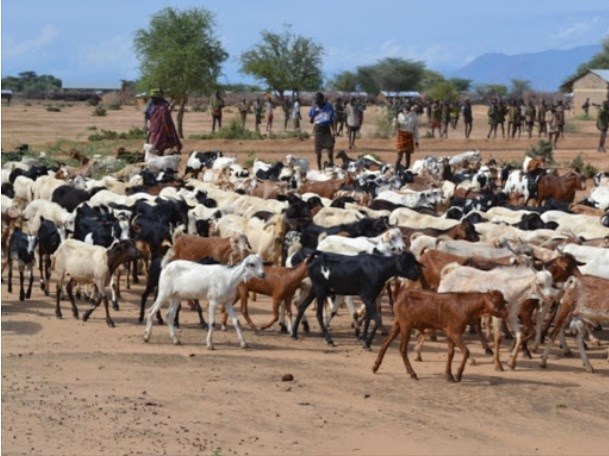
Friday April 5, 2019
by ABEL MUHATIA

A file photo of livestock in Kajiado
A Sh2.1 billion livestock export quarantine centre by the Export Processing Zone Authority is expected to provide livelihood for up to 6.5 million livestock rearers.
According to the EPZ, it meets global standards set out by the World Health Organisation.
According to the authority's 10-year strategy plan, the quarantine is expected to create at least 2,645 jobs and raise up to Sh20 billion annually to pastoralists.
“In the first seven years, at least three million heads of cattle are expected to be placed in the quarantine for fattening for up to 18 months, this is expected to grow to five million in the eighth to ten years,” the EPZA strategy says.
Livestock for export will be kept in isolation at the quarantine for 21 to 30 days subjecting them to clinical and physical examinations.
The livestock will then be exported to Arabian, Peninsula and Middle East markets which have a high appetite for East Africa meat.
The quarantine forms part of EPZ's contribution to boost manufacturing under President Uhuru Kenyatta’s big four Agenda.
Kenya's livestock exports currently face stiff competition from Somalia, Djibouti, and Sudan which however do not fatten and finish their livestock before export.
According to Livestock Trade services, the quarantine will push the value of meat exports from a local market price of Sh5,000 per kilo in Kenya to Sh11,000 per kilo at the destination port.
“Without quality quarantine services, Kenyan livestock has zero value for live animal export,” veterinary surgeon Chip Stem said.
At the moment, Kenyan meat exports are largely unsustainable and enter the global market at low prices due to relatively low and variable quality.
Stem said this makes Kenya's meat exports a marginal forex earner.
A letter to EPZA by the Livestock Service Provider says the country has the capacity to export 5 million heads of livestock a year.
However, they confirmed to have established a market to export at least 1 million sheep and goats and 100,000 cattle, this for sh4,000 per head per year for the sheep and goats.
This is expected to kick off after the first three years of the quarantine earning Kenya Sh10 billion in forex with anticipation to grow the forex to Sh50 billion after 10 years.
Revenue realised for the first three years is expected to increase from Sh4 billion to Sh20 billion annually by the end of the 10-year strategy.
According to the state department of livestock, changing climate, land tenure issues, reduction in grazeable lands due to crop development, land degradation, and market access are major challenges facing pastoralists in Kenya today.
Data from the 2018 Kenya National Bureau of Statistics show that The total value of marketed livestock and related products in Kenya grew from Sh125.4 billion in 2016 to Sh135.6 billion in 2018.
Cattle and calves production value were the highest in the livestock sector as of 2017 at Sh93.63 billion followed by Goats and Sheep at Sh6.78 billion.